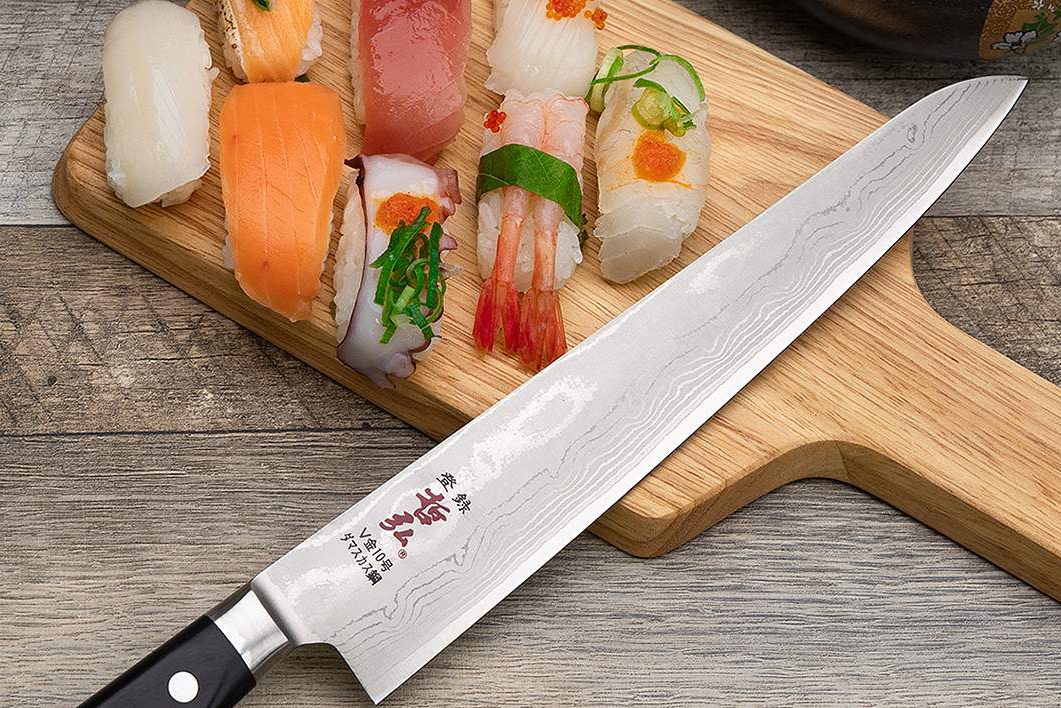A knife is the most ancient tool, and household blade, to which we have long been accustomed. However, do not forget that a knife, even a kitchen knife, requires the right attitude. If you do not follow the safety precautions and rules for handling the blades, you risk injury or damage the tool itself. Let's talk about how not to cut yourself when wielding the sharpest blade and make sure that the knife does not lose its cutting properties for as long as possible.
Safety rules when using a knife
The history of the knife is not only the evolution of its shape, blade, and sharpening technique but also many years of application experience, based on which safety rules were formed that are relevant to this day. Here are some tips for working with a knife that will help you avoid injuries and cuts:- Do not cut towards you. It is convenient to act this way when you need to chop or peel small fruits and roots, cut off the rope, scotch tape. However, it is undesirable to do so, especially on weight. Also, do not use the cut with the object to be cut resting on your thumb. If you still cannot do without it, move the knife away from you.
- Do not use blunt knives. The duller the blade, the more force you need to apply, the more likely the knife will slip and unexpectedly change the direction of the cut. Paradoxically, the risk of cutting yourself with a sharp knife is lower than with a blunt one. The sharp blade is maneuverable, and its movement is much easier to control.
- Do not drop the knife on the table or in the sink. Always place your knife in a specific spot while cooking. Otherwise, it is possible that you accidentally cut yourself while trying to grab nearby objects or food.
- Do not leave on the edge of a countertop, on a towel, etc. It is important to follow this rule if there are children in the house.
- Do not store with the blade up. It is permissible to store it open on a magnetic holder or stand, but the tip of the blade should be directed downward.
- Do not touch the cutting edge with your fingers. Often this is how sharpness is checked, and someone washes the blade with their fingers. However, if the blade is very sharp, cuts cannot be avoided.
- Do not swing the knife. And if you pass it to someone, then handle it forward. Also, do not try to catch a falling instrument.
When working with tourists, households, hunting knives, such as kukri, it is important to observe separate safety measures. For example:
- move only in a sheath, by putting it behind a belt or in a pocket without a cover;
- do not work with a knife using the body as support (when cutting carcasses, for example);
- do not use to work with electrical wires, devices;
- do not hold the blade with your mouth;
- not to be thrown from a height or to another person if the blade is not in the sheath.
Blade care
It is worth observing the rules for handling the knife, the task of which is to preserve the life of the blade and prolong the sharpness of the cutting edge. Let's list the main recommendations:
- Use only as directed. Each blade has its own specialization, so there is no need to cut frozen meat with ceramic, try to chop greens with bread, and even more so open cans with a kitchen knife. In the best case, the result of the cut will be unsatisfactory, in the worst case, the knife will simply break.
- Provide care. High carbon steel knives should be hand washed and wiped dry after each use.
- Store separately from other tools. When in contact with other tools, the blade may scratch or form the smallest chips, which will lead to dullness or damage to the cutting edge.
- For long-term storage, treat the blades with special compounds. Otherwise, stains and corrosion may develop on the blade.
- Do not leave in high humidity conditions. Do not store blades in a pool, sauna, bathroom, over a stove or sink. Allocate a dry section of a kitchen unit or a stand on a worktop for knives.
- Don't rule over each other. This method has been used in the past for mild steel and stainless steel knives. Hard, high-carbon materials are destroyed by this action.
- Sharpen only with special tools or in a workshop. It is important to respect the manufacturer's original sharpening angle and to use stones of a suitable grain size.



POST COMMENTS
0 COMMENT(S)